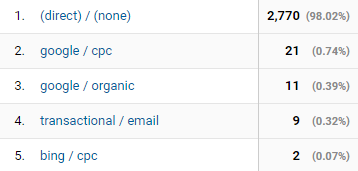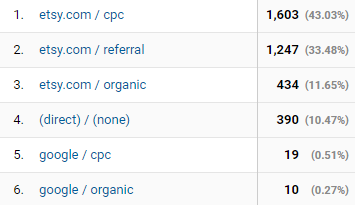If you’re ready to harness the power of numbers to optimize your Etsy shop but haven’t installed (or upgraded) Google Analytics yet, don’t wait any longer!
Here are the complete, accurate instructions for connecting Google Analytics 4 with an Etsy shop.
You will learn:
- What login to use for Google Analytics
- Whether to create a new Google Analytics Account or use one you already have
- All the most effective, up-to-date settings to apply inside Google Analytics
- How to link your new Google Analytics tracking number to Etsy
- How to test everything is working
- What to do next to start looking at your visitor numbers and behaviour!
⚠️ You need to follow these instructions even if your Google Analytics 4 Property was created automatically and you had the old GA version (Universal Analytics) connected to Etsy.
Read more



